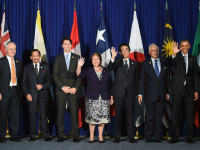The day after Canada signed the TPP (and a Leger poll found huge opposition to the agreement’s IP and ISDS provisions), the shift toward consultation and study can continue in earnest. Chrystia Freeland, Canada’s Minister of International Trade, used the signing to emphasize once again that signing is not the same as ratifying and that the government is committed to a robust Parliamentary and public review of the agreement.
The Trouble with the TPP series continues today with another example of the lack of balance in the text. An earlier post noted how in the TPP rights holders’ provision are often mandatory, while those for users are treated as optional. The lopsided approach is also evident in the border measures rules. This week I discussed the expansion of border measures provisions without court oversight, which could lead to customs officials being asked to make difficult legal assessments on whether to detain goods entering the country.












